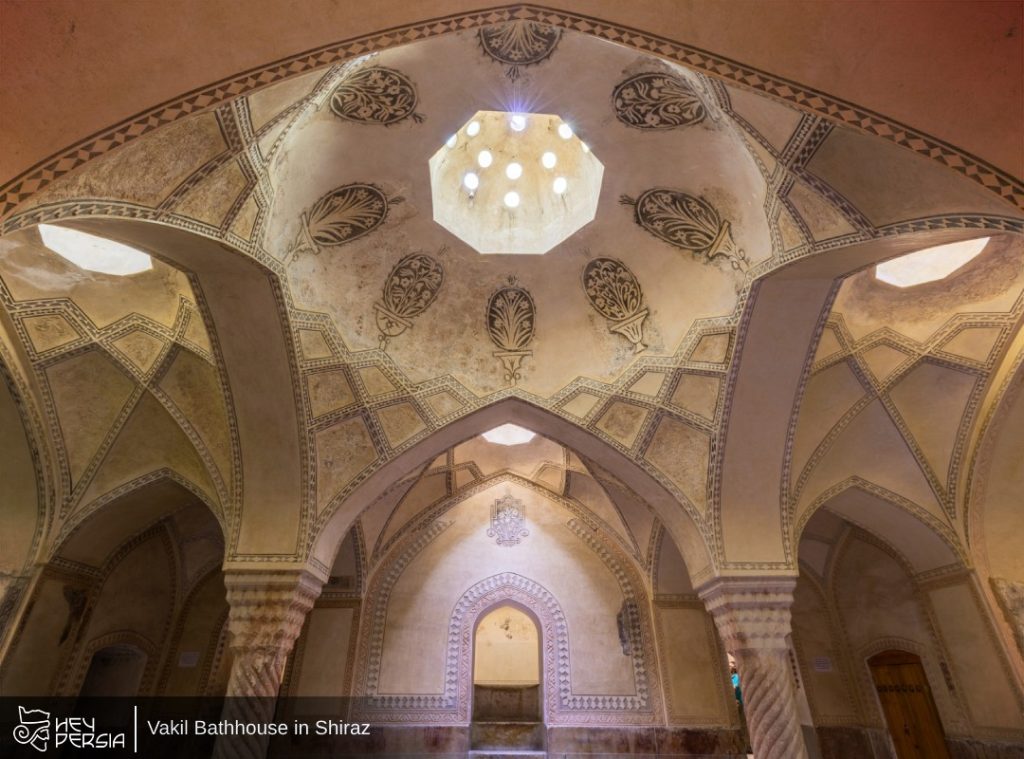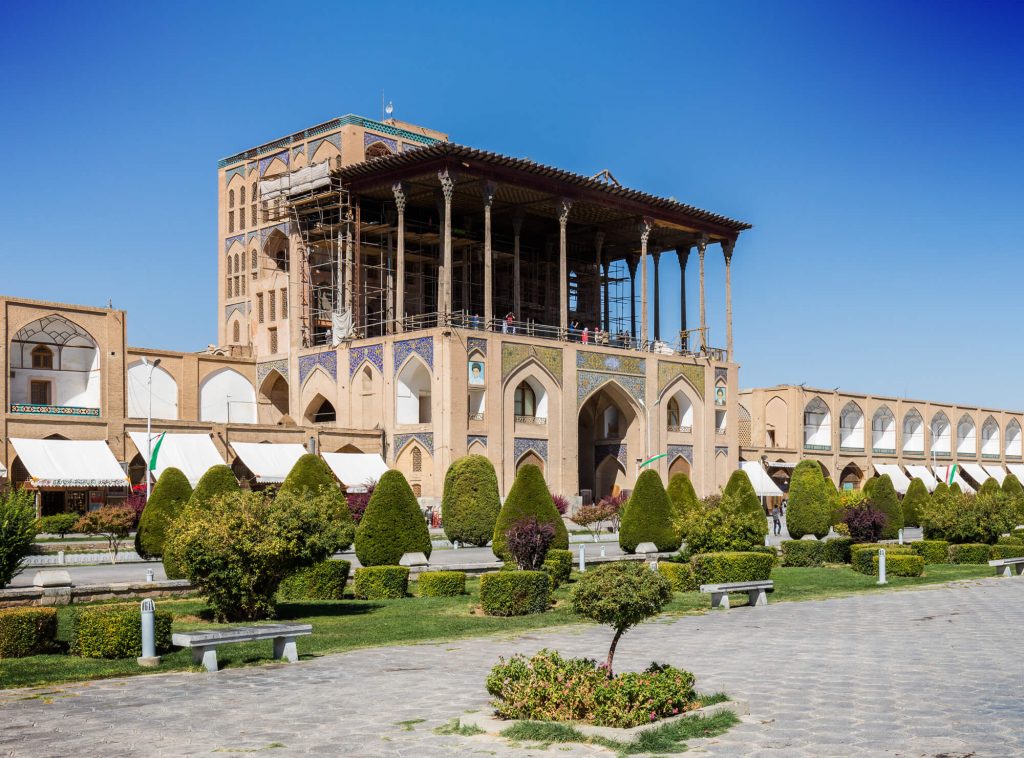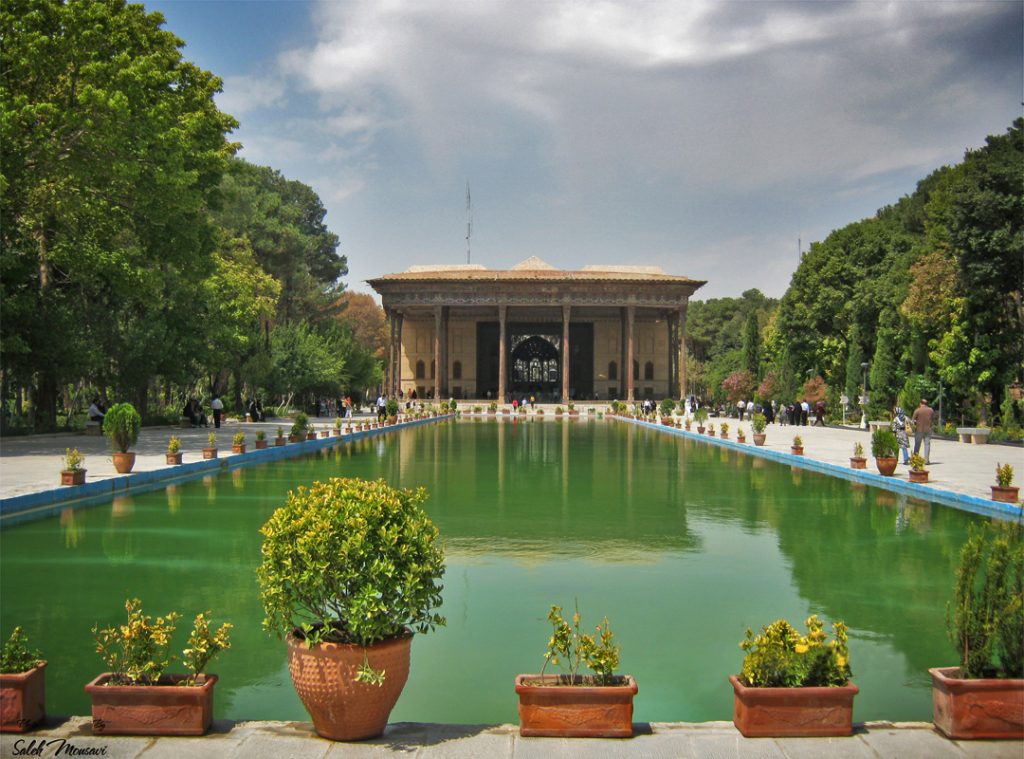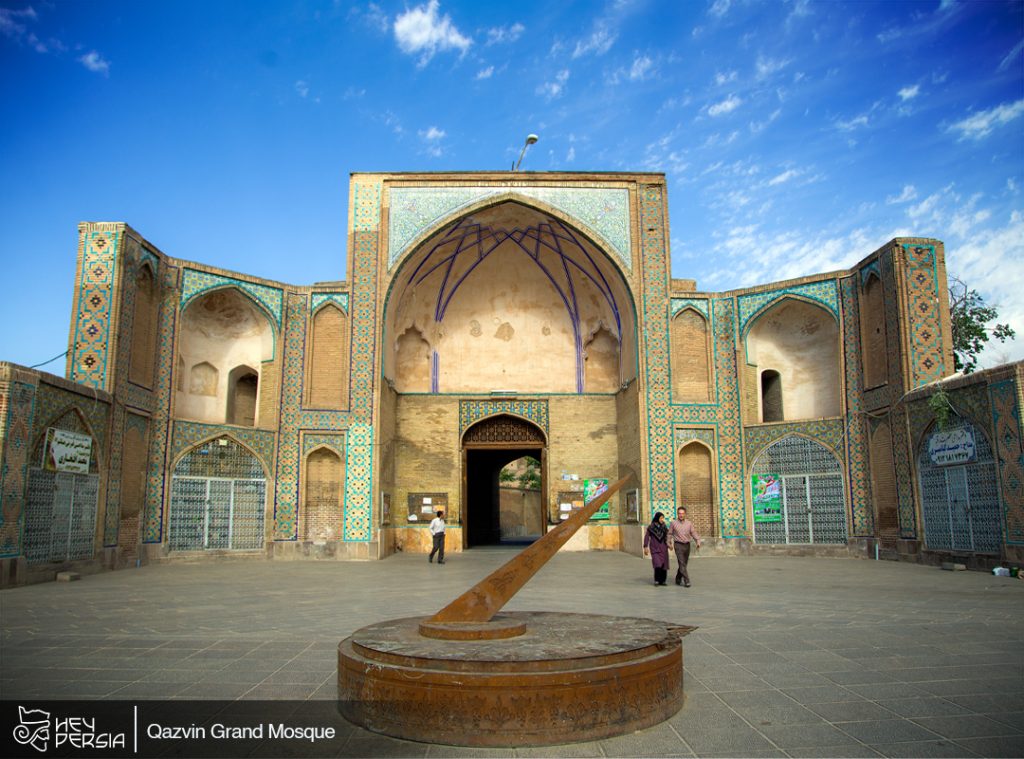Genrally, In Persian culture and Islamic tradition, bathhouses symbolize purity and cleanliness. Over centuries, Vakil Bathhouse in Shiraz was built for various reasons. Beyond their spiritual significance, they served as a source of income for mosques, schools, and other religious buildings. The Ilkhanid era saw a surge in bathhouse construction, but it was during the Safavid period that bathhouse architecture truly flourished, with over 272 bathhouses built in Isfahan alone.
Following the Safavid era, bathhouse construction continued in the Isfahan style, and one such gem is the Vakil Bathhouse in Shiraz. Nestled behind the Vakil Mosque and within the Vakil Bazaar, this bathhouse forms part of the iconic Vakil Complex, one of Shiraz’s must-see attractions.
Moreover, In this blog of Hey Persia, we’re diving into the wonders of the historic Vakil Bathhouse, sharing everything you need to know for an unforgettable visit. So, let’s get there!
Where is Vakil Bathhouse?
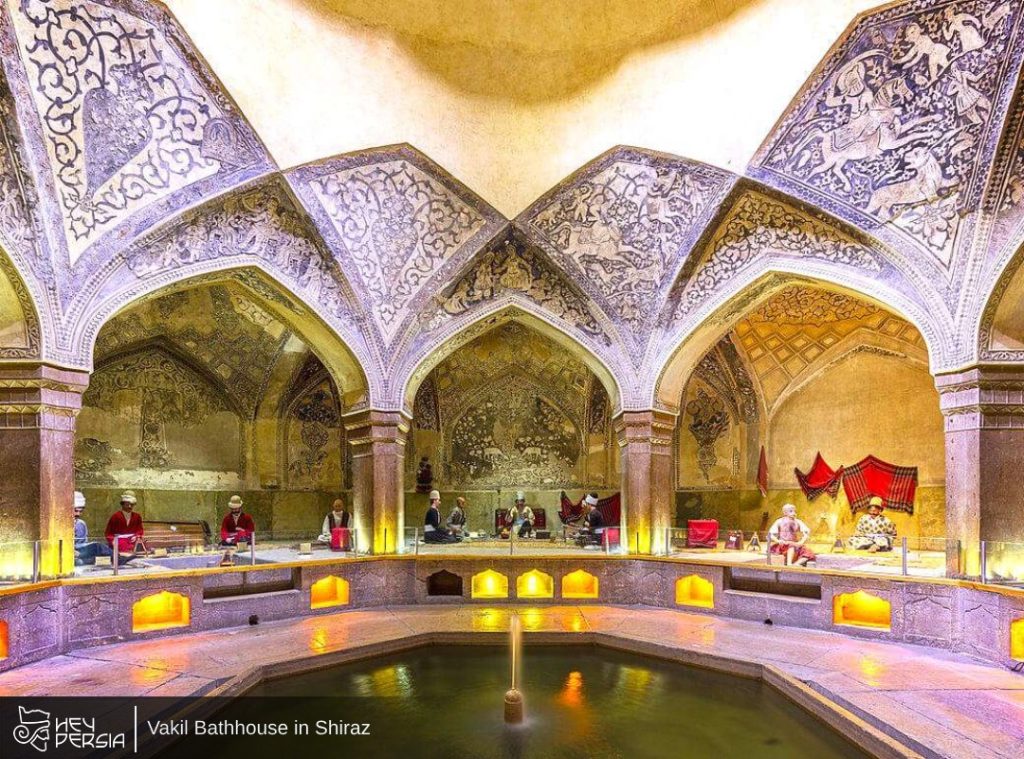
The Vakil Bathhouse is located in Shiraz, along with Eram Garden in Taleghani Boulevard, just west of the Vakil Bazaar. If you’re driving, head toward Karim Khan Zand Boulevard, park near Taleghani Square, and walk the rest of the way. Prefer public transport? Take the metro to Zandiyeh Station and enjoy a 10-minute stroll to the bathhouse.
Generally, Registered as a national heritage site under number 917, the bathhouse was in 1972. Today, it serves as an anthropology museum, showcasing the traditions and lifestyles of old Shiraz.
A Glimpse into Vakil Bathhouse’s History
Dating back to the Zand dynasty, the Vakil Bathhouse in Shiraz was commissioned by Karim Khan Zand in 1773 CE. When Karim Khan chose Shiraz as his capital, he embarked on an ambitious building spree, and this bathhouse was one of his masterpieces.
Spanning 11,000 square meters, the bathhouse was a marvel of engineering for its time. It remained in use until the late Pahlavi era, with parts converted into private bath stalls and even a traditional gym (zurkhaneh). In 1972, the Archaeology Department restored it, but post-revolution, it briefly became a restaurant, which sadly damaged the structure. Aditionally, To preserve its legacy, it was transformed into an anthropology museum, where life-like statues depict scenes of people bathing and socializing.
Generally, Bathhouses weren’t just for cleansing—they were social hubs. That’s why rulers, like Karim Khan, prioritized building grand ones, and he personally oversaw the construction of this architectural gem.
What Makes Vakil Bathhouse’s Architecture Unique?
- Clever Entrance Design: The bathhouse’s small, sloped entrance and corridor prevent warm air from escaping and cold air from sneaking in, keeping the interior cozy.
- Exquisite Lime Carvings: The interior is adorned with intricate lime-based decorations, primarily from the Zand era, with some additions from the Qajar period. Unlike plaster, which absorbs moisture and deteriorates, lime withstands humidity, preserving the artwork for centuries.
- Vivid Storytelling: The carvings depict a range of themes, from Quranic stories and Persian legends to intricate arabesque patterns. You’ll find scenes like the Prophet’s ascension, Joseph in the well, the sacrifice of Ishmael, Ali’s visage, and romantic tales like Shirin bathing or Bijan meeting Manijeh.
Exploring the Sections of Vakil Bathhouse
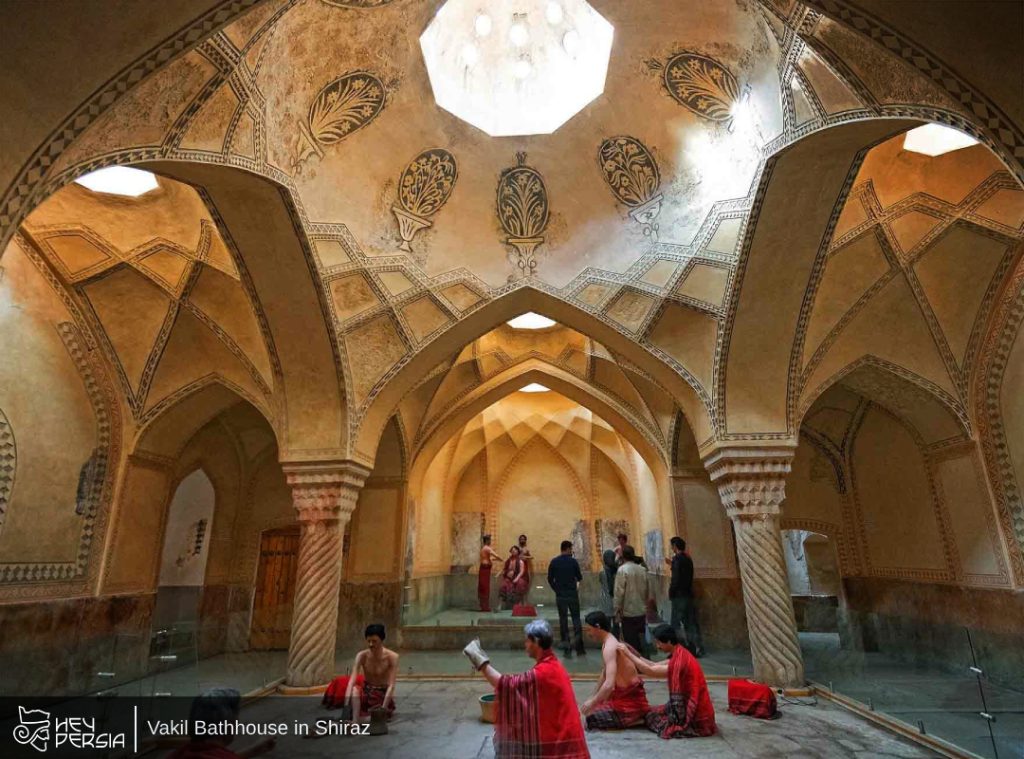
The bathhouse is thoughtfully designed with several distinct areas:
1. Entrance of Vakil Bathhouse in Shiraz
The small, sloped entrance, as mentioned, helps regulate temperature. Originally plain, it was later embellished with decorative tiles during the Qajar era.
2. Khazine (Water Reservoirs)
In the northern part of the warm room, three reservoirs held lukewarm, hot, and cold water, catering to different bathing preferences.
3. Sarbineh (Changing Room)
Actually, The largest section, the octagonal sarbineh, served as the changing area. Supported by sulfur-rich limestone columns, it features four small pools where bathers would soak their feet post-bath—a practice encouraged in Islamic tradition.
4. Miandar (Corridor)
This winding corridor connects the warm room to the sarbineh, allowing bathers’ bodies to gradually adjust to the cooler air of the changing area.
5. Warm Room (Garmkhaneh)
The square-shaped warm room, where bathing took place, is anchored by four central columns. Moreover, It includes two smaller rooms with pools for additional washing.
6. Shah-neshin (Royal Seating) in Vakil Bathhouse in Shiraz
Flanking the warm room, these two areas feature a central marble pool surrounded by stone steps, where the king and his courtiers would relax or socialize.
7. Hakem-neshin (Governor’s Seating)
Two additional seating areas, each with a pool, were reserved for governors. Moreover, one was demolished during the Pahlavi era to make way for private bath stalls.
How Was the Bathhouse Heated?
The floor however, covered in stone tiles, hid a clever network of channels that circulated hot water, keeping the bathhouse comfortably warm year-round.
Visiting Hours for Vakil Bathhouse
- April to September: 8:30 AM to 8:30 PM
- October to March: 7:30 AM to 7:30 PM
Final Thoughts
Finally, The Vakil Bathhouse in Shiraz is a breathtaking testament to Zand-era architecture and one of Shiraz’s top attractions. Built under the watchful eye of Karim Khan Zand, it remains a vibrant piece of history, inviting visitors to step back in time.
Planning a trip to Shiraz, the city of poetry and culture? Join us at Hey Persia Travel Agency for a seamless and memorable adventure. Our tours cater to curious travelers, especially those seeking unique, meaningful experiences. Book your journey with us, and let’s explore Iran together!

